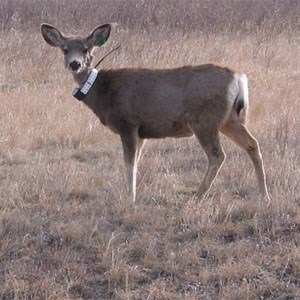
NPS Photo.
Chronic wasting disease (CWD) is a fatal neurologic disease of deer and elk. CWD is in the family of diseases known as the transmissible spongiform encephalopathies (TSEs) or prion diseases. Other TSEs include scrapie in sheep, bovine spongiform encephalopathy (BSE or mad cow disease), and Creutzfeldt-Jacob disease (CJD) in humans. CWD causes brain lesions that result in progressive weight loss, behavioral changes, and eventually death in affected deer, elk, and moose. CWD is traditionally diagnosed postmortem; however, a new biopsy technique using tonsillar biopsy can now be used as live animal tests.
CWD has occurred in a limited geographic area of northeastern Colorado (including Rocky Mountain National Park) and southeastern Wyoming for over 25 years. The distribution of CWD in free-ranging deer and elk has expanded significantly in the last 10 years. This is likely due to both human assisted movement of cervids across the landscape and natural migration and cervid interactions between and within host species. There is currently no evidence that CWD is transmissible to humans or domestic livestock; however, the disease may limit populations of deer, and potentially elk, and could result in profound impacts on the recreational value of these species.
To learn more about chronic wasting disease, read disease background, guidance for visitors, and more here.
Last updated: April 26, 2018
